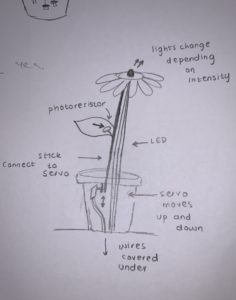Bret’s article “A Brief Rant on the Future of Interaction Design” was an a very stimulating read. I really enjoy reading half-formed ideas that do not necessarily serve the purpose of strong arguments and persuasion, as much as they serve as an inspiration- which can push us in challenging the status quo in our way, regarding even such banal scales as the design of things we use daily. As mentioned in my previous posts, I struggle a lot with making myself think outside of the known forms – just because one thing was designed in a certain way, with only subtle alterations throughout the years, it does not mean that we should continue on building on the very same design of “yesterday’s technology”. Yet I need to constantly keep reminding myself.
Here I found Bret’s central point of designing technology for humans particularly useful: he articulates the struggle I already had, yet with attentive observation of human nature. Though he did not bring anything concrete to the table, his remarks regarding the sensitive use of hands, through which we can feel instant feedback of almost any object (apologies to Crawford), well highlights the need for observation of human behaviour when designing a future interaction. Technology can be mended easily, human behaviour not that much. Yet the way Bret describes it, is that this behaviour is unchangeable – and that if designed badly, the interaction will remain unsuccessful, inefficient and uncomfortable.
I immediately connected this problematic to what I ran into in last couple of weeks. I recently started drawing on a tablet with a stylus – and I could not wrap my mind around the weird sensation I experienced while using it. Though the designers put a lot of effort into making the stylus of similar shape and weight as a pen/pencil would feel, as well as decreasing the distance between the glass and tip of the pen, there was something inherently funny and unsettling about the interaction.
Yet I would not say it wasn’t tactile the way Bret describes screens – on the contrary, maybe it was a way too tactile, making my hand being very confused about the flow, friction and feedback – the whole drawing interaction, as a sudden replacement to an interaction between a hand, piece of paper and a pen. Frankly, I was not completely convinced by the argument that we changed the tactile for the visual with touchscreen- we still experience both, but as creatures of habits, we tend to get very whiney and uncomfortable when the known form we are used to changes. It made me think of what is the main obstacle we should focus on in terms of predicting human behaviour regarding interaction: is the problem habits that, however, can be changed the way technology can be mended, or is it the human nature that is unchangeable and deeply encoded within our genes?
And, to leave this with a lighter note, here is a quick meme to balance the heaviness of the text, that, however, weirdly relates to Bret’s explanation of human capability, tool and need, and the whole futuristic spirit of the article. 

